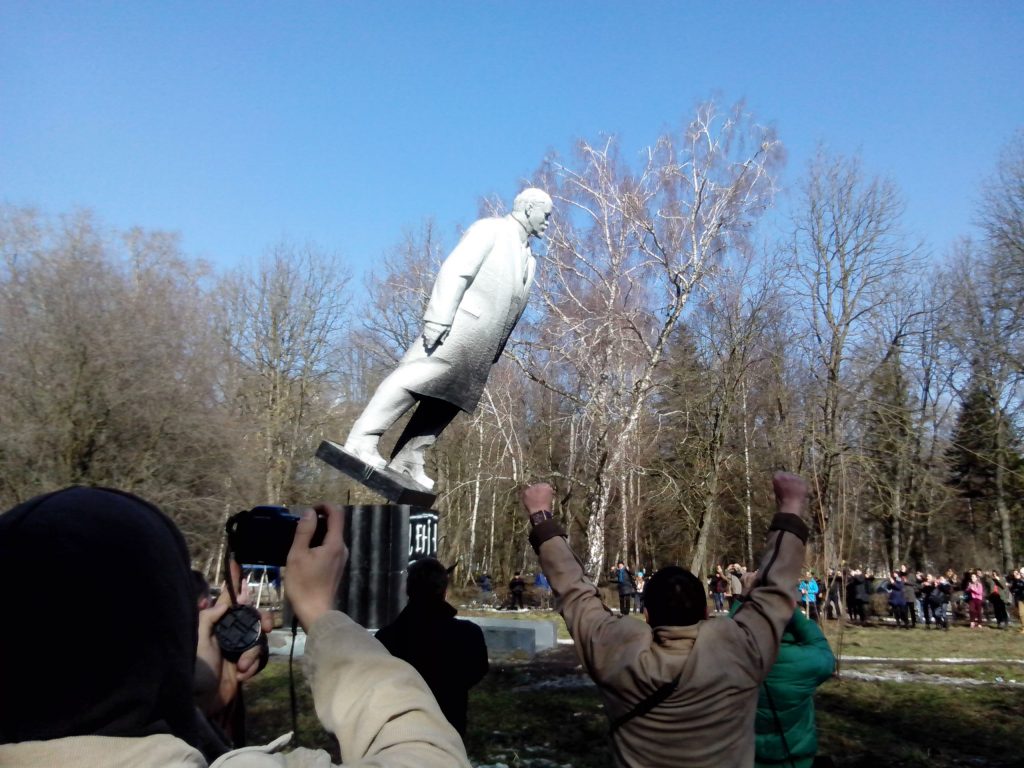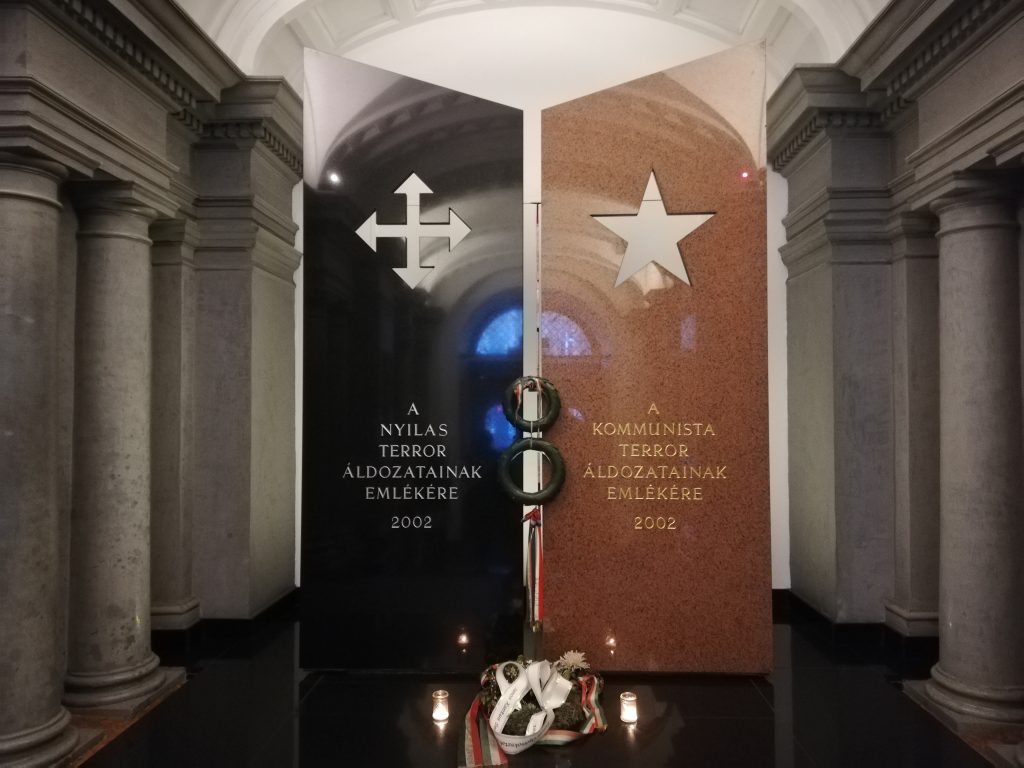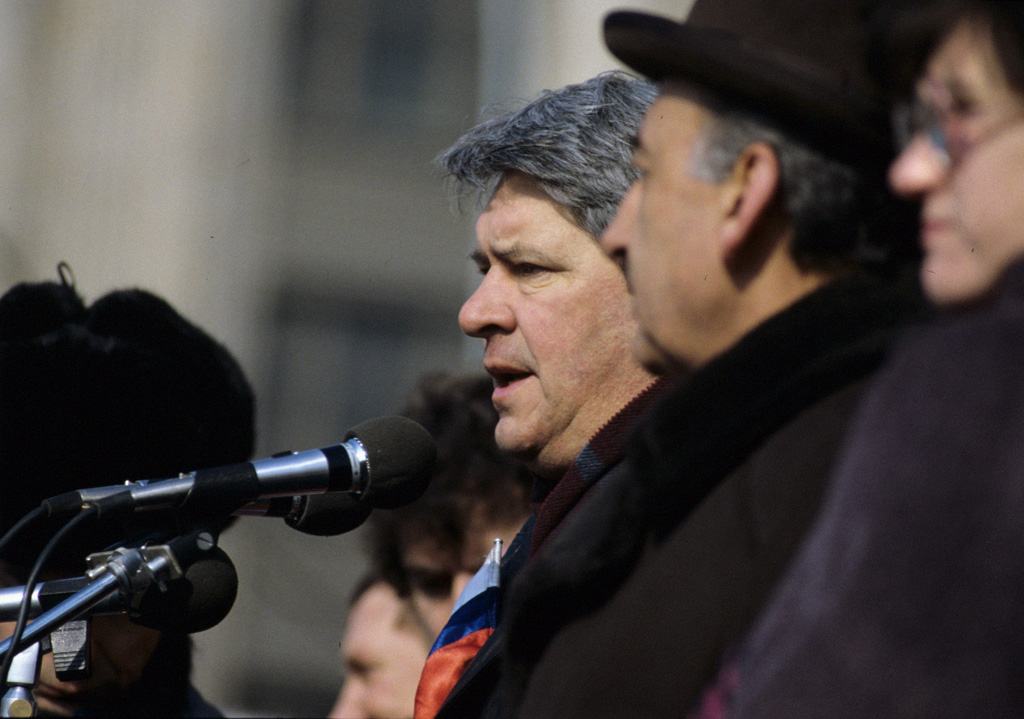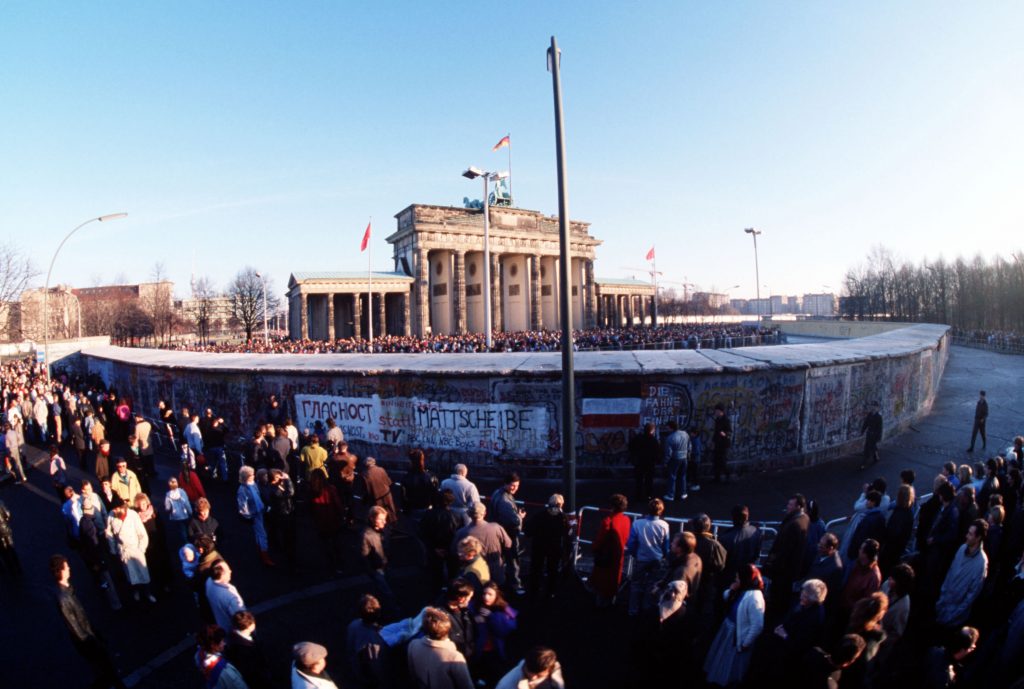Marie-Claire Lavabre
Emeritus Research Director at the French National Centre for Scientific Research
Addressing the memories of communism in Europe rather than the European memory of communism reveals a presupposition from the outset. Because, while today “memory”, still missing from the vocabulary of European institutions in the early 1990s, represents a category of action intended to foster “European memory”, memories of communism still seem to be manifold, whether ideologically informed, or whether referring to the relative heterogeneity of communist experiences in Europe. In fact, it is indeed the memories of communism in Europe that, for the past three decades, have spawned a wealth, if not a glut, of scientific, media and political literature. This is not surprising given the link that can be established between the enormous social changes that have brought the issue of memory in Western Europe to the fore since the late 1970s and the major upheavals that have affected Central and Eastern Europe, soon after to become known as “post-communist” Europe, since 1989. But this first solid observation must be unravelled because it instantly raises many questions. The first question undoubtedly invites us to agree on should be understood when it comes to considering social memory. Should the emphasis be placed on memories of a shared experience or on political uses of the past? The second question concerns the scales of analysis of this social memory: should we envision sub-national (generational or social belonging) groups, national groups (of historic experiences) or supranational or transnational affiliations or even a “global memory” or one in the process of becoming so? Lastly, should we highlight the role of memory in forging identity and cohesion or, on the contrary, in causing conflict? In turn, these questions open up gulfs of complexity as far as “Memories of Communism in Europe” are concerned. In this respect, unless the object is reduced to one memory of communism split according to an East-West divide inherited from communism and “post-communism” (a category which, by the way, is questionable, just like the caesura imposed with the fall of the Berlin Wall in 1989), the enormous amount of literature on the topic most often refers to localised studies, at national level, essentially focussing on policies of the past, here and there, whose effectiveness is widely taken for granted. Nevertheless, they reveal major differences from one country to another.
These dissimilarities refer the West and the East back to the Second World War – and to the position of the countries concerned, allies or enemies of the Third Reich. But they also relate to the specificities of the history of the Soviet bloc countries during the communist era. Needless to say, the repression of revolts and movements – even attempts at revolution – spring to mind here, such as that of 1953 in the GDR, that of 1956 in Hungary, that of 1968 in Czechoslovakia or those of 1956 and the 1970-80s in Poland. But the types of “transition” of these very countries also need to be considered, between relative continuities negotiated and assumed as such, as in Poland or Bulgaria, and brutal if not violent breaks (and publicised as such like in Romania). The literature given over to the political-normative reflection on the desirable contents of a memory common to reunified Europe and its “painful pasts”, between Nazism and Stalinism or between the Shoah and the crimes of communism, has not however gone away. Very recently, the protests and outrage sparked, mainly in Western Europe and particularly in France, by the European Parliament’s adoption in September 2019 of a resolution on “the importance of European memory for the future of Europe”. To sum up a long line of initiatives since 2005, following the European Union’s first enlargement to include former communist countries, the latter asserted the role of the German-Soviet Pact in the outbreak of the Second World War and associated the communist and Nazi regimes in the same sentence, which “carried out mass murders, genocide and deportations, and caused an unprecedented loss of life and freedom”. Therefore, the questioning of the memories of communism in Europe arises from an ideal-typical case on the uses and meanings of memory understood as policies of memory, even as the political instrumentalisation of the past born out of the desire to build a shared memory heritage – at various national and European levels. But this does not mean it cannot consider the social memories of the lived experience or the political divisions rooted in the long history of the 20th century that, in both East and West, cut across societies.

toppled near Stanytsia Luhanska | Volodymyr D-k, CC BY-SA 3.0,
Wikimedia Commons
In 1989, under the dual guidance of Yuri Afanasiev and Marc Ferro, the book entitled 50 idées qui ébranlèrent le monde. Dictionnaire de la glasnost [50 Ideas That Shook The World. Glasnost Dictionary] was published in France. Original in its approach, it organised dialogues and confrontations between French and Soviet authors on a series of topical issues. A double “Memory-History” leaflet was written by Yuri Afanasiev on the one hand, and Pierre Nora on the other, then engaged in writing the major volume Les Lieux de Mémoire [Realms of Memory]. Yuri Afanasiev began his reflection on memory by emphasising the importance of memory for societies as well as for individuals. Sometimes, he wrote, memory seems to die out “then it gushes again and sets the whole social reality alight”, in the most contemporary Soviet context as in Khrushchev’s time with de-Stalinisation and the release of thousands of prisoners. At that time, however, he underlined, it was literature and the publicisation of memories, and not history, which initiated the reconstruction of memory destroyed by years of Stalinism “by the powerful means of propaganda, by official history […] by physical violence and finally by the ramifications of the network of camps”. He concluded: “Reconciling history and memory in the conditions of Soviet society is no easy task. Our history is just as falsified by the past”. And, therefore, “history belongs to everyone and to no one”. Pierre Nora, following him, noted that “in both East and West, the invocation of memory and its saving virtues has recently taken on burgeoning topicality” and immediately warns: “in the West, memory is not sacred today only because, most often, it is poor and misleading. It is memory, and not history, that conveys ready-made truths”. The focus of all kinds of manipulation, instrumentalised by the government, parties and the media, “it is memory that alienates and history that liberates”.
This controversy over the words and the realities they denote, here too briefly recreated, is significant. In fact, the authors both argue for history as knowledge of the past and acknowledge continuities between history and memory. However, when Yuri Afanasiev underlines what Paul Ricœur would later call the “memory’s truth-seeking goal”, Pierre Nora holds onto this for the role of history as a critique of memory, bearer of illusions, myths, errors and falsifications. This debate reveals that the binary opposition between history and memory does little to enlighten us. Memory can be both instrumentalisation of the past and resistance to such instrumentalisation; it can be both a political resource (among others or failing others) and a shared memory of a lived experience. As for the latter, witness to the past, it can be both a golden legend or a black legend, nostalgia or lasting resentment.

exhibits related to the fascist and communist regimes in 20th-century
Hungary and is also a memorial to the victims of these regimes, including
those detained, interrogated, tortured or killed in the building | EUROM

We can therefore postulate that the memories of communism that exist today in the European arena pertain to different levels of analysis that involve the consideration of the history of communism as it is written, memory policies (or more broadly, public narratives of the past) and vestiges of the lived experience in the same movement. Echoing Yuri Afanasiev’s contextualised point of view is this remark heard in Bulgaria in the context of the first elections of 1990: “Here, I remember is a powerful political argument”.
Symbolised by the fall of the Berlin Wall, the collapse of communist regimes in Europe in 1989 – followed by German reunification in 1990, and the dissolution of the Soviet Union in 1991 – immediately brought to light a “retrieved memory” in the East to quote a joint publication released in France in 1990, in which the latter – witness both to the communist experience and to pre-communist history – had long been obscured by official history, confined to sites or private or niched social settings – as was also the case in the USSR – in literary or cinematographic productions, confidential or not. While obviously not homogeneous, this emerging public memory nonetheless revealed an overwhelming rejection of communist regimes in the East while it contributed in the West to further undermining already weakened Communist parties or, more broadly and in the same movement, the cornerstones of a memory of the workers’ movement or of anti-fascist struggles, shared beyond communist parties alone. In France in particular, the publication of François Furet’s book Le passé d’une illusion. Essai sur l’idée communiste au XXe siècle [The Passing of an Illusion. The Idea of Communism in the Twentieth Century] in 1995 is a significant milestone in this regard.
But it was in 1997, with the joint publication The Black Book of Communism, subtitled Crimes, Terror, Repression, edited by Stéphane Courtois, that the debate on the East-West divide as to the meanings of memory would take on new salience. Stéphane Courtois, in an extensive introduction that would spark a debate within the group of authors and a spate of academic, political and media positions, highlights the affirmation of the intrinsically and essentially criminal nature of communism and condemns a hemiplegic European history, between the memory of the genocide of the Jews of Europe, given as unique, and the concealment of the crimes of communism. The approach sets itself a two-fold “memory” obligation as a moral horizon, in tribute to the victims of communism, and of history, to bridge the gaps in the European history of totalitarianism and to counter the fables of communist memory. Whereas the plan to work history and to address the violence, repression and terror brought about by Stalinism has practically gone uncontested, putting Nazism and Communism on a par and even more so “class genocide” and “racial genocide” has ignited an ideological debate that never stops smouldering. Widely translated and disseminated in Eastern Europe, The Black Book of Communism has provided a historical rationale and an analytical framework for the unequivocal rejection of communist regimes.

Moscow meeting to support Boris Yeltsin and Russian
presidential referendum | RIA Novosti archive, image
418402 / Alexander Makarov / CC-BY-SA 3.0
This rejection, which has become a constitutive part of democracies in the making in a number of Central and Eastern European countries, has resulted in decommunisation and “lustration” laws like in Czechoslovakia, and the purging of certain institutions, as was the case of universities in the former GDR. Widely shared practices include the opening of archives authorising the denunciation or stigmatisation of communists or former communists, the removal of symbols of communism in public spaces such as street names or statues, the establishment of dedicated institutions such as the Museum of Communist Terror in Hungary or the Institute of National Remembrance in Poland. The staging of the rupture must not however conceal real continuities. Under them, the memory of communism seems to have inscribed itself in many respects within the frameworks of communist memory itself and of the practices of an official and sometimes strictly national history, as in Poland or Hungary today. Furthermore, stigmatised communists have not always been disqualified and many of them, especially among the political, intellectual or economic elite, have managed to harness the heritage and expertise acquired to adapt through their adherence to the new democratic and liberal norm. Conversely, however, here and there, formerly anti-Communist intellectuals declare themselves to be “anti-anti-Communists” while others underline the ambivalence of communism between “dark side and bright side”, to use a phrase by Annie Kriegel, historian of communism, herself a former communist and reputed to be anti-communist. However, while manifestations of disappointment or nostalgia – specifically known as “Ostalgia” in reunified Germany – are not lacking, it cannot be disputed that Europeans have not experienced the same history since the end of the Second World War, no more I might add than the citizens of Central and Eastern Europe since the fall of the Wall. Memories of communism are, nevertheless, an effect of the present at least as much as they are an effect of the past. In this respect, they are indeed still a topical political issue, both in East and West.
For further information:
À l’Est, la mémoire retrouvée, edited by Alain Brossat [et al.], Foreword by Jacques Le Goff, Paris, La découverte, Paris, 1990.
Mémoires du communisme en Europe centrale, Introduction by Marie-Claire Lavabre and Antoine Marès, Cahiers du CEFRES No. 26, Prague, 2001.
Mémoires à l’Est, Etudes comparatives EST-OUEST, edited by Françoise Mayer, volume 37, No. 3, Paris, 2006.
L’Europe et ses passés douloureux, edited by Georges Mink and Laure Neumayer, Paris, La découverte, 2007.
L’Europe et ses représentations du passé. Les tourments de la mémoire, edited by Marie-Claude Maurel and Françoise Mayer, L’Harmattan, Logiques sociales Collection, Paris, 2008.
D’une « mémoire européenne à l’européanisation de la « mémoire », edited by Sarah Gensburger and Marie-Claire Lavabre, Politiques européennes, L’Harmattan, no. 37, 2012.EUROPA, notre histoire, edited by Etienne François, Thomas Serrier [et al.], Les Arènes, Paris, 2017.
